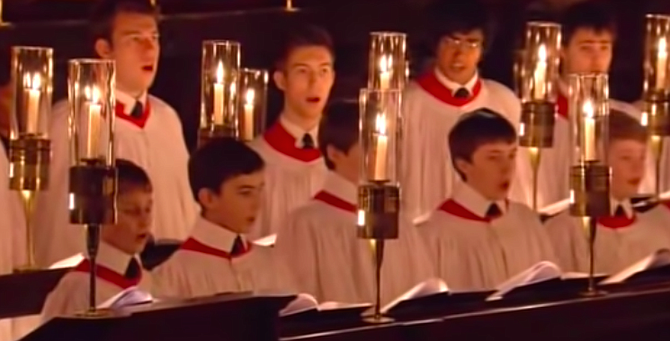 Facebook
Facebook
 X
X
 Instagram
Instagram
 TikTok
TikTok
 Youtube
Youtube

Christmas always has a nip of melancholy in the eggnog for me these days. It could be because my children are growing older. It could be because I myself am growing older. For many of us, an air of disillusionment envelops the mistletoe during this season.
Christmas, specifically December 25, has been a day of hope for thousands of years. Celebrations on this day date back to ancient Egypt when the rebirth of the sun was acknowledged.
There was hope, the sun wasn’t going to continue its journey toward the southern horizon. It was reborn and began ascending once again toward halcyon summer.
Yet, on a day of hope, I still can’t shake those minutes of melancholy that always appear. Could it be because Christmas never really delivers? Even the baby Jesus was born to celestial celebrations but with a shadow of the cross looming over the manager.
What is my Christmas wish this year? Well, there’s Covid-19 and there's a vaccine or two in the news. Even if Christmas delivers, the residue of 2020 will be tasted upon the candy canes.
There is no better way to address melancholy than with melancholy. It is its own cure.
With that in mind, I give you three pieces of Christmas melancholy to cure what ails.
In the Bleak Winter, with music by Gustav Holst, is a poem written in 1872 by Christina Rossetti. The opening verse should make its melancholic tone obvious:
In the bleak mid-winter
Frosty wind made moan;
Earth stood hard as iron,
Water like a stone;
Snow had fallen, snow on snow,
Snow on snow,
In the bleak mid-winter
Long ago.
The second piece is much like the first. It is a setting of the ancient Latin text O Magnum Mysterium by American composer Morten Lauridsen. Written in 1994, this setting is a modern classic.
It helps to have a translation of the Latin text:
O great mystery,
and wonderful sacrament,
that animals should see the newborn Lord,
lying in a manger!
Blessed is the virgin whose womb
was worthy to bear
the Lord, Jesus Christ.
Alleluia!
The third piece is yet another setting of O Magnum Mysterium. This one is from the late Renaissance and Spanish composer Tomás Luis de Victoria. I find Victoria’s music to oft be the cure for melancholic episodes throughout the year but this one is Christmas specific.
If your Christmas colors are not red and green but rather blue and bluer, take a moment to wallow in it with these three short pieces of Christmas melancholy.


Christmas always has a nip of melancholy in the eggnog for me these days. It could be because my children are growing older. It could be because I myself am growing older. For many of us, an air of disillusionment envelops the mistletoe during this season.
Christmas, specifically December 25, has been a day of hope for thousands of years. Celebrations on this day date back to ancient Egypt when the rebirth of the sun was acknowledged.
There was hope, the sun wasn’t going to continue its journey toward the southern horizon. It was reborn and began ascending once again toward halcyon summer.
Yet, on a day of hope, I still can’t shake those minutes of melancholy that always appear. Could it be because Christmas never really delivers? Even the baby Jesus was born to celestial celebrations but with a shadow of the cross looming over the manager.
What is my Christmas wish this year? Well, there’s Covid-19 and there's a vaccine or two in the news. Even if Christmas delivers, the residue of 2020 will be tasted upon the candy canes.
There is no better way to address melancholy than with melancholy. It is its own cure.
With that in mind, I give you three pieces of Christmas melancholy to cure what ails.
In the Bleak Winter, with music by Gustav Holst, is a poem written in 1872 by Christina Rossetti. The opening verse should make its melancholic tone obvious:
In the bleak mid-winter
Frosty wind made moan;
Earth stood hard as iron,
Water like a stone;
Snow had fallen, snow on snow,
Snow on snow,
In the bleak mid-winter
Long ago.
The second piece is much like the first. It is a setting of the ancient Latin text O Magnum Mysterium by American composer Morten Lauridsen. Written in 1994, this setting is a modern classic.
It helps to have a translation of the Latin text:
O great mystery,
and wonderful sacrament,
that animals should see the newborn Lord,
lying in a manger!
Blessed is the virgin whose womb
was worthy to bear
the Lord, Jesus Christ.
Alleluia!
The third piece is yet another setting of O Magnum Mysterium. This one is from the late Renaissance and Spanish composer Tomás Luis de Victoria. I find Victoria’s music to oft be the cure for melancholic episodes throughout the year but this one is Christmas specific.
If your Christmas colors are not red and green but rather blue and bluer, take a moment to wallow in it with these three short pieces of Christmas melancholy.
Comments